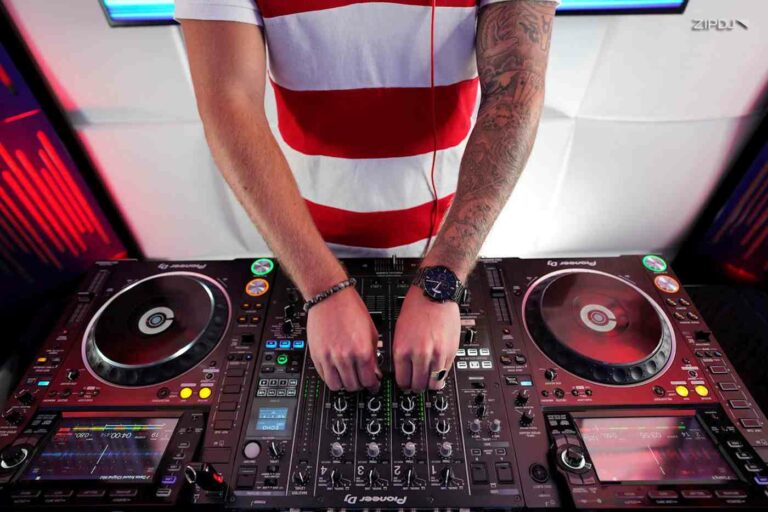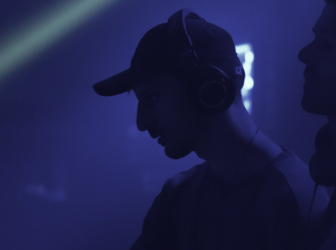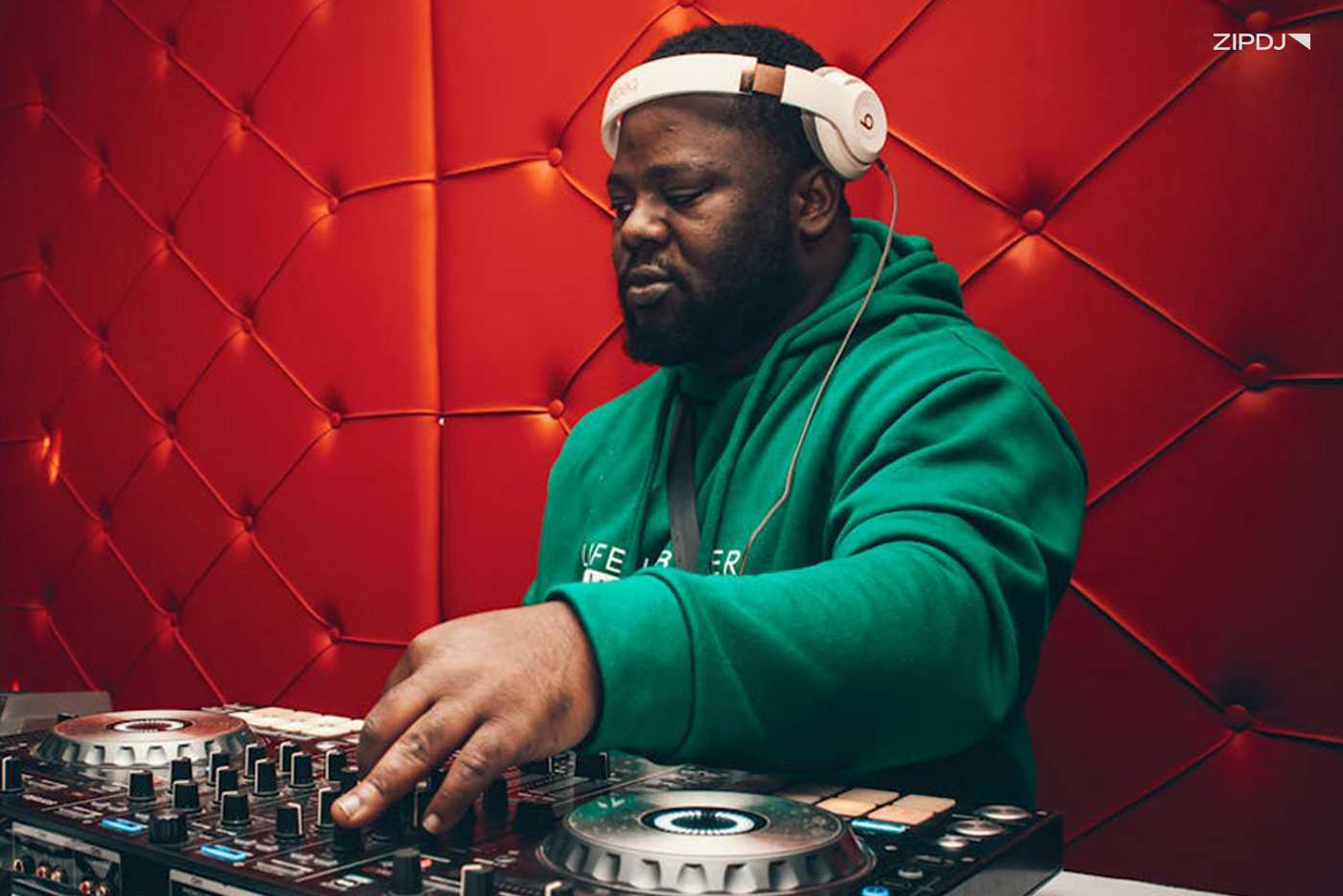How To Make DJ Drops In 2025 (Step-By-Step)

DJing is now more popular than ever, making it harder for artists to stand out from the competition and make a mark on the scene.
Creating your own DJ drops is a tried-and-trusted method for establishing your sound and reinforcing your brand identity. They keep your name in front of your audience during live performances and online broadcasts.
This guide explains DJ drops, how to produce them with professional sound quality, and how to use them for promotion.

What Is A DJ Drop?
A DJ drop is a short audio clip featuring the DJ’s name. It can be spoken or sung and played between or during mixes in a DJ set.
DJ drops are primarily a promotion tool for DJs, helping them reach out to the crowd. They can be customized for various DJing situations.
They also add a professional touch to performances, elevating the art of DJing and further establishing an artist’s style and genre.
While DJ drops traditionally include the DJ’s name, they can feature sound effects and samples, such as sirens, explosions, and other special effects.
They can be produced using professional audio editing software in a studio or using free or affordable software for DJs on a tight budget.
Why Are DJ Drops Important
DJ drops can play a significant role in a performance, putting a name to a face and helping to foster a closer relationship between the DJ and the audience.
If you’re a DJ looking to build your reputation, here are some advantages to using DJ drops in your live sets:
- Building brand awareness: The first and most important benefit of creating DJ drops is building awareness around your brand. By announcing your DJ name, you will significantly increase your chances of getting your music heard.
- Improving crowd engagement: Great DJs understand the importance of reading the crowd and encouraging engagement with the artist. DJ drops personalize the performance, particularly when combined with catchy slogans.
- Creatively enhancing sets: DJ drops can include various sound effects, and their scope for applications in sets goes beyond brand promotion. They can offer another creative tool and capitalize on the different effects available in DJ software.
- Elevating radio shows and live streams: If you’re a professional DJ working in various formats, you can create a custom DJ drop for different gigs. This approach is essential if you’re becoming a radio DJ and need multiple DJ drops for various broadcasts.
The more gigs you pick up, the greater the selection of DJ drops you can record to keep your sets fresh and relevant.
How Do You Use A DJ Drop
DJ drops are highly flexible. DJs can add them to their sets at various points to introduce excitement or promote their brand.
While you should avoid overusing DJ drops, they can be added at various points in a set, from quiet moments in a song to breakdowns and build-ups.
They can also be handy when performing back-to-back DJ sets, clarifying the name of the current DJ on the decks for the audience.
Many DJs use their DJ drops directly at the beginning of a set to introduce themselves to the crowd, which is an excellent way to get the event rolling.
Another popular method is to use DJ drops at the end of popular and closing songs, as the audience’s attention is typically high at these points.
ZIPDJ’s pricing covers everything DJs need.
How To Make DJ Drops In 2025 (Step-By-Step)
While creating your own DJ drops may seem daunting, the process is straightforward and doesn’t require much money.
Here’s how to create DJ drops using diverse tools, refine your voice, and apply different effects for a stronger impact.
Step 1: Invest In The Right Equipment
Before making DJ drops, you’ll need the right equipment to record your voice and process the results with effects.
Some DJs record their drops on smartphones, and depending on the phone’s make and model, decent results are possible.
However, you’ll need to invest in a dedicated microphone, such as a condenser mic, which offers the best recording quality for professional DJ drops.
You don’t have to spend a fortune to get great results. However, if your budget allows, consider investing in a higher-end model from Shure or similar brands.
If you’re considering becoming a DJ producer, this investment will pay dividends in the long run, with a condenser microphone frequently used for your own songs.
When recording your own voice, you can use your DJ headphones to minimize feedback. Perform the recordings in a quiet room free from background noise.
Step 2: Install Music Production Software
The next step when preparing to record DJ drops is acquiring the best music production software you can afford to mix and master the recording.
With more music being produced and annual music releases, the market for production software offers plenty of options.
You can use free production tools, such as Audacity, while Adobe Audition works well for content creators already in Adobe’s ecosystem.
FL Studio, Ableton Live, and Logic Pro for Mac are preferable for more professional DJ drops with complex sound effects and other mixing tools.
Ableton Live and FL Studio have smartphone options, while Caustic 3, Bandlab, and Virtual DJ offer additional mobile-friendly tools.
Take time to master your software, research the relevant mixing tools, and watch online tutorials.
These steps will help you create high-quality DJ drops with excellent sound quality, crisp speech and effects, and minimal distortion.
Step 3: Find The Right Voice
Whether you have a good voice or struggle with verbal communication, DJ drops work best when it matches the tone and style of the music.
Those who have trouble clearly communicating can overcome this through the recording process by performing multiple takes to refine their speech.
On the other hand, if you’ve been hosting a DJ podcast or radio show, you should already have a distinct verbal style that you can easily apply to DJ drops.
As you practice your delivery, listen to each take back to hear how it sounds and adjust your tone, volume, and clarity.
The more you refine your DJ drops, the better they will align with your DJ persona and improve their overall impact in a set.
If you’re having trouble finding the right voice, listen to live sets and mixes from famous DJs you admire and note how they sound.
You can also consider hiring a voice actor or getting an MC you’ve worked with in the past to contribute vocals for your DJ drops.
Step 4: Write Memorable Scripts
DJ drops are short, making it challenging to write scripts that capture the audience’s attention in a few words.
When well written, DJ drops can be a valuable tool for staying relevant as a DJ and capturing the vibe to leave a lasting impression on the crowd.
Follow these best practices to write DJ drops that make an impact during your set:
- Keep them concise: As William Shakespeare declared in Hamlet, “Brevity is the soul of wit.” This ethos firmly applies to writing scripts for DJ drops. Using as few words as possible will help the message stick in the audience’s mind and reinforce it as a slogan.
- Use rhyming and wordplay. Rhyming expressions are proven to remain in the mind longer than standard sentences, and when combined with wordplay, they can elevate a DJ drop into something special.
- Avoid being too serious: A playful and conversational tone works best for audience connection, creating a sense of intimacy that heightens the experience.
Always consider your target audience and fan expectations to ensure that your scripts align with your brand, persona, and the theme of an event.

Step 5: Apply High-Quality Sound Effects
Once you’re happy with the sound quality and tone of voice, you can augment your DJ drops by adding sound effects to create a sense of dynamism.
Many free sound effects libraries are available for download, offering a wide range of options for different genres. Sample packs provide high-quality sounds that enhance the clarity and impact of your DJ drops, allowing for more refined results.
Likewise, if you’re familiar with DJ stems, you can apply these separated elements to your DJ drops and flesh out how they sound in the mix.
When selecting sound effects, try to be selective so they blend into the style of music you’re playing and don’t create jarring moments.
While air horns, lasers, rewind, and vinyl scratch effects are commonly used in DJ drops, you should aim to be more adventurous and unpredictable with your choices.
Related reading: Explore the importance of DJ pools for promotion.
Step 6: Enhance With Professional Audio Mixing
Once you’ve combined your vocal recording with select sound effects, you can refine the way everything comes together using audio editing software.
All production software includes basic sound mixing tools to balance channels, refine frequency ranges, and polish the sound.
Technological advancements have brought this level of mixing to devices such as the iPhone 16 Pro, which can provide studio-quality sound.
Processing effects such as reverb and chorus can add depth and intricacy to the drops, making them more interesting to hear on the dance floor.
As you work on mixing the drop, play it back on different systems to see how it sounds, and test it by practicing dropping it into a mix to ensure it fits seamlessly.
Gathering feedback from friends and other DJs will also help you spot issues that you may have overlooked, allowing you to make necessary adjustments in the studio.
Step 7: Master & Export The Drops
The final step when creating DJ drops is to master the audio and export it in appropriate file formats for use with your DJ equipment.
While professional mastering engineers are available, you can perform this task yourself with free or affordable audio mastering software.
There are also online services for mastering audio on a track-by-track basis, such as Tunecore’s AI mastering service.
The mastering process will ensure that your DJ drops deliver a polished, professional touch that matches the production values of the tracks in your DJ sets.
Saving in WAV and FLAC formats preserves sound integrity better than MP3, and you can also include metadata to assist with organization.
You can organize your playlists by creating a dedicated folder for DJ drops and using clear tags and names to make them easy to access during performances.
This setup ensures seamless integration of drops into your event sets, allowing you to combine them with additional special effects from your DJ controller.
Step 8: Create Customized Drops
The first important DJ drop you need to create should be a generic introduction that fits seamlessly into any DJ set or situation. Doing so ensures flexibility across different venues, events, and music styles.
Once you’ve finalized this recording, you can begin working on custom drops for various situations, venues, and event types.
For example, if you have a DJ residency, you can create a dedicated drop that includes the venue’s name and your own in a shout-out.
One-off gigs at popular nightclubs and festivals also provide a chance to craft custom DJ drops that connect with the event’s theme and audience.
Likewise, if you’re performing at a DJ fundraising event, you can create a custom DJ drop to help raise awareness for the charitable cause.
Radio DJs and those with podcasts can also produce a selection of drops for their broadcasts that establish the mood for their audiences.
Build your music library with curated selections from ZIPDJ.
Summary
Making DJ drops is a fun and simple way to bring a professional touch to your performances and promote your brand directly to a target audience.
As your DJ career grows, you can expand your library by adding effects to your voice and crafting a custom DJ drop for one-off events.
The more experience you gain with different production methods, the better your DJ drops will sound, enhancing the mood and flow of your sets.
Not a member ?
Join Today for Unlimited Music Downloads. Visit zipdj.com for more information.



